Jose Rizal’s Relations with other Filipino Patriots and Heroes
THIS LECTURE tackles in detail Jose Rizal’s collaborations, relationship, and interaction with other Filipino heroes and patriots in his time. Among other things, this article gives us a picture of how Rizal was as a friend and compatriot especially in foreign lands.
Antonio Luna
Born on October 29, 1866in Urbiztondo, Binondo, Manila, Antonio Luna was five-year younger than Jose Rizal. Antonio was the youngest of the 7 children of Joaquin Luna and Laureana Novicio Ancheta.
Antonio received his Bachelor of Arts degree in 1881 from the Ateneo Municipal de Manila. He afterward studied literature, chemistry, and pharmacy at the University of Santo Tomas. Having superb scientific mind, his paper in chemistry ‘Two Fundamental Bodies of Chemistry’ won first prize in a contest in UST. Versatile and multi-talented, he also studied music (he was a good guitar player), as well as fencing, swordsmanship, and military science and tactics under a Spanish cavalry officer, and became a sharpshooter.
To obtain a licentiate (at Universidad de Barcelona) and doctorate (at Universidad Central de Madrid) in Pharmacy, Luna went to Spain where his older brother Juan was living. In Europe, he corroborated with other Filipino expatriates like Rizal in working for the Propaganda Movement. Writing for La Solidaridad, he once contributed the article ‘Impressions’ which discussed Spanish unique traditions and customs under the pen-name ‘Taga-ilog’. He also managed the paper La Independencia.
Someone who could be considered as an early Filipino scientist, Luna in 1893 published his scientific treatise on malaria, ‘El Hematozoario del Paludismo,’which was well received in the community of medical scientists and physicians. The Spanish government later commissioned him to study tropical and communicable diseases (“Antonio Luna,” n.d.).
In 1889, a Spanish writer, Pablo Mir Deas, attacked Antonio Luna in the Barcelona newspaper “El Pueblo Soberano”. As Rizal’s defense of his friend Luna, he wrote the article “Inconsequencias” (Inconsequences) which was published on November 30, 1889. A year after however, Rizal challenged Antonio to a duel. In a party held by Filipinos in Madrid, the intoxicated Antonio Luna made negative comments against Nellie Boustead—the woman he was courting but was said to have been infatuated with Rizal. Jose Rizal, who at the time was not in a good mood for bearing various problems, was prompted to challenge Luna into a duel. But since Luna apologized to Rizal, the duel was nonetheless aborted and their friendship was restored. When Rizal later decided to formally court Nelly, Antonio gentlemanly conceded to Rizal and even congratulated him through a letter.
Antonio returned to the Philippines in 1894. By winning in the competition for chief chemist of the Manila Municipal Laboratory, he attained the prestigious position. He and his older brother Juan also opened a fencing club in Manila, the ‘Sala de Armas’.
In 1896, Andres Bonifacio sent Pio Valenzuela to Dapitan to get Rizal’s approval of the Katipunan’s planned revolution. Rizal however politely refused to approve the uprising, believing that a revolution would be unsuccessful without arms and monetary support from wealthy Filipinos. He thus recommended that if the Katipunan were to start a revolution, it had to ask for the support of rich and educated Filipinos, specifically Antonio Luna who was also an expert in military tactics (Bantug & Ventura, 1997, p. 133).
When Antonio was asked to corroborate in the planned revolt of the secret society, he turned down the invitation, believing that reform was better than revolution. But when the Spanish authorities had known about the Katipunan and its plans, the Luna brothers were arrested and locked up in Fort Santiago for supposed involvement in the society. It was said that Antonio’s statement about the Filipino uprising was one of those used to nail down the punishment of death for Rizal. Juan and Jose Luna were released months later but the more military-oriented Antonio was deported to Spain in 1897 and was incarcerated at the Carcel Modelo de Madrid.
When released through the intercession of his influential brother Juan, Antonio studied various aspects of military science like guerrilla warfare, management, and field fortifications, under Gerard Leman, who would later be the commanding officer of the Liege fortress (“Antonio Luna,” n.d.). Arriving in Hong Kong, he met Felipe Agoncillo who gave him a letter of recommendation to Emilio Aguinaldo.
Returning to the Philippines in July 1889, he joined Aguinaldo’s cause in the Philippine-American war. Assigned by Aguinaldo ascommander of the Philippine Revolutionary Army, Lunafounded the country’s first military academy, formed professional guerrilla soldiers which was later known as the ‘Luna sharpshooters,’ anddesigned the three-tier defense (now known as the Luna Defense Line) which gave the opponents a hard campaign in Central Luzon.
Unfortunately, he was killed in a ‘spur-of-the-moment’ incident on June 5, 1899 by Filipino captain Pedro Janolino and other elements of the Kawit troop whom he (Luna) had earlier insultingly discharged for either cowardice or insubordination. Some blamed Aguinaldo as having a hand in Luna’s death, especially that no investigation was done on Luna’s death and the ‘murderers,’ though identified, were not punished.
Just recently, there were talks over the internet concerning Luna’s supposed diversion of millions of pesos from the Republic’s treasury, particularly from Ilocos and Pampanga, to Tarlac, the hometown of his sweetheart, Ysidra Cojuangco. Ysidra was the aunt of Jose Cojuangco, father of former Philippine president Corazon Aquino. The large sum of wealth was said to have been entrusted by Luna to Ysidra, resulting in the Cojuangco clan becoming one of the richest family in the Philippines by 1900.
![]()
The late Filipino historian Teodoro A. Agoncillo once had a conversation with then president Ferdinand Marcos about Antonio Luna. Asked about his opinion of the hero, Agoncillo answered, “Luna was a great general who didn’t win any battles!” Marcos then blurted, “You see, I’m a descendant of Luna” which resulted in Agoncillo’s becoming tongue-tied (Ocampo, 2010, p. 20). In 1968, during the 102nd birth anniversary of Luna, Marcos delivered a speech about the general whose kin was from Badoc, Ilocos Norte. Marcos praised Luna for introducing guerrilla tactics that preceded that of China’s Mao Zedong and Vietnam’s Vo Nguyen Giap and Ho Chi Minh (Antonio Luna,” n.d.).
Now, if Marcos was indeed Luna’s descendant and Luna was the cause of Cojuangco’s becoming rich, then President Noynoy Aquino’s clan had an “utang na loob” (debt of gratitude) to the forebear of Senator Bongbong Marcos.
Mariano Ponce
Mariano Ponce was bornto Mariano Ponce Sr. and Mariana Collantes de los Santos in Baliwag, Bulacan on March 23, 1863. After completing his primary education in his hometown, he enrolled at the Colegio de San Juan de Letran.
He afterward took up medicine at the University of Santo Tomas when Rizal was also attending classes in the institution. In 1881, Ponce left for Spain to continue his medical studies at the Unversidad Central de Madrid, where Rizal would also enroll as medicine student the following year.
In Europe, he met the great Filipino propagandists: Jose Rizal, Graciano Lopez Jaena, and Marcelo H. del Pilar. The overpowering feeling of patriotism got the better of Ponce that he quit his studies to join the Filipino Movement in Spain (“Philippine heroes—Mariano Ponce,” n.d.) With Lopez Jaena, he co-founded the ‘La Solidaridad,’ served as secretary of the Propaganda Movement, and became head of the Literary Section of the Asociacion Hispano-Filipina.
As a propagandist, he used various aliases like ‘Naning’ (his nickname), ‘Kalipulako’ (from ‘Lapu-Lapu’), and ‘Tigbalang’ (a supernatural being in Filipino folklore). Through his writings, he disclosed the sad condition of Filipinos under Spanish government, attacked the rulers’ abuses, and fought for reforms and equality.
He actively corroborated with other Filipino patriots like Rizal and Del Pilar and kept correspondence with them. In fact, Ponce was the one who introduced Del Pilar to Rizal. Jose Rizal one day received a letter from Ponce with enclosed articles written by a certain ‘Plaridel.’ Impressed by the articles, Rizal wrote to Ponce, “I am very grateful to you for this … Who is Plaridel?” (“The Love-and-Hate Relationship,” 2013) Upon knowing Plaridel’s identity through Ponce, Rizal had then befriended Del Pilar (Plaridel) through correspondence. However, it was only in December 1888 when Rizal first met Ponce and Del Pilar when he (Rizal) visited his compatriots in Madrid and Barcelona.
Poncewillingly helped Rizal in the distribution of the Noli Me Tangere. In his letter dated August 18, 1888, Rizal asked Ponce, “Please send me two or three copies of the Noli… for I am going to begin the continuation. Try to send to Manila as many copies as you can. They sell well there…you will get one-half of the sale there.” Ponce’s August 25, 1888 reply read, “I continue sending copies of the Noli to the Philippines through every possible means. By so doing, I am only filling the orders that I receive. (“Rizal and Other Reformers [1888],” n.d.)
Through Ponce’s letters to Rizal, we could also glean that Ponce was also close to Ferdinand Blumentritt, the Austrian professor whom Rizal considered as his “best, dearest friend.” In Ponce’s July 4, 188 letter, he told Rizal, “Mr. Blumentritt has already informed me of the grand reception that the Noli me Tangere had in Germany… This good and learned professor also told me that he was busy translating it into German” (“Rizal and Other Reformers [1888],” n.d.).
Poncemust have been so proud to become Rizal’s friend, especially that the author of Noli had become so popular among Filipinos after the novel’s publication. In his August 25, 1888 letter, he said to Rizal, “Many friends ask me to send you their greetings. My family, who also sends your greetings, wished to have a picture of you, and so I wish to request you to comply with this desire when you have your picture taken” (“Rizal and Other Reformers [1888],” n.d.).
During the election for ‘Responsable’ among Filipinos in Madrid in February 1891, Rizal got the majority of the votes but the count fell short of the required two-thirds vote to be declared the winner. Rizal won again on the second day, but his votes did not reach again the needed fraction. On the third day, the very sensible Mariano Ponce appealed to some Pilaristas to surrender their will to what the majority wanted. Ponce’s influence and wise move resulted in Rizal’s becoming the ‘legal’ Responsible, though he (Rizal) eventually decided to politely abdicate his leadership and leave Madrid.
When the Katipunan launched the revolution on August 1896, Ponce was arrested and locked up for 48 hours. Upon release, he fled to France to avoid another arrest. He later traveled to Hong Kong and corroborated with other Filipinos and Filipino-Chinese in the Junta Revolution.
In 1898, Emilio Aguinaldo chose Ponce to represent the newly-founded First Philippine Republic and commissioned him to design a framework of the revolutionary government. Assigned later as a representative of the First Republic to Japan, Ponce went to Japan to seek aid. In Japan, he met, negotiated with, and became a close friend of Sun Yat-Sen, the founder and First President of the Chinese Republic. Through Dr. Sun’s assistance, Ponce had procured weapons for the Philippine revolution, though the shipment failed to reach the Philippines because of a typhoon off the coast of Formosa.
Poncereturned to the Philippines with his Japanese wife, Okiyo Udanwara.
![]() He was later elected assemblyman for Bulacan’s second district in the Philippine Assemblyand Speaker Osmeña appointed him chairman of the Committee on Libraries of the Philippine Assembly.
He was later elected assemblyman for Bulacan’s second district in the Philippine Assemblyand Speaker Osmeña appointed him chairman of the Committee on Libraries of the Philippine Assembly.
In 1917, he published his ‘Ang Wika at Lahi,’ a discussion on the significance of a having a national language. He was most likely influenced by Rizal’s interest in having a distinct Filipino language. In Rizal’s August 18, 1888 letter, he informed Ponce, “The new Tagalog orthography (a system of spelling) that we are using is perfectly in accord with the ancient writing and with the Sanskrit origin of many Tagalog words as I have found out through my research in the British Museum. Adopt it.” Ponce’s August 25, 1888 reply happily notified Rizal, “My family and I have already adopted the new Tagalog orthography and we write each other in it. My friends are also adopting it.”
Before his death in the Government Civil Hospital in Hong Kong on May 23, 1918, Ponce had written and published his memoirs, “Cartas Sobre La Revolucion” (Letters on the Revolution). His remains are now interred in the Cementerio del Norte, Manila. The public national high school located in Bagong Nayon Baliuag, Bulacan was named after him.
Mariano Ponce was the one who gave the title “Mi Ultimo Pensamiento”(My Last Thought) to the last and most celebrated, but originally untitled, poem of his dear friend Jose Rizal. Today though,the poem is conventionally referred to as “Mi Ultimo Adios” (My Last Farewell).
Graciano Lopez Jaena
Graciano Lopez Jaena (December 18, 1856-January 20, 1896) was a Filipino propagandist, journalist, and orator. He founded the fortnightly patriotic newspaper, La Solidaridad, of which he became the first editor.
Lopez Jaena was born to a poor couple, a general repairman and a seamstress in Jaro, Iloilo. At the age of six, he was placed under the guidance of a priest who noticed his intellectual capacity and special gift of speech. He finished high school as the best theologian in a local seminary.
His mother wanted him to become a priest but Graciano preferred medicine. He tried to study at the University of Santo Tomas but was denied, for what he finished in the seminary was not equivalent to a bachelor’s degree. To learn medical practices, he was nonetheless advised to serve as an apprentice instead at the San Juan de Dios Hospital.
After two years as a hospital trainee, he returned to his hometown in Iloilo when his family ran out of money for his allowance and further training. Without a physician license, he dared to practice medicine and treated many patients for free.
His visits with the poor and sick provided him various knowledge about the clerical and colonial injustices inflicted among the natives. He counseled them and gave them hope by sowing in their minds the idea of freedom. At the age of 18, he anonymously wrote a satire, “Fray Botod (Big Bellied Friar)” which revealed the friars’ greed, immorality, cruelty, and false piety. This incensed the Spanish clergy and authorities but they could not prove that Lopez Jaena was its author. He got into deep trouble, however, when he refused to testify that some prisoners died of natural causes for he knew that they had died at the hands of the mayor of Pototan. When threats were made on his life, he left for Spain in 1880.
With financial support from his concerned friends, he took medical courses at the University of Valencia. His thirst for reforms nonetheless took him away from medical studies into writing for patriotic cause and establishing the genesis of the Propaganda Movement two years ahead of Rizal and nine years before Marcelo Del Pilar. Rizal once reproved Graciano for not finishing his medical studies. Jaena figuratively explained, “On the shoulders of slaves should not rest a doctor’s cape.” Rizal however retorted, “The shoulders do not honor the doctor's cape, but the doctor's cape honors the shoulders.” (“Graciano Lopez Jaena,” n.d.).
In Spain, Jaena became known as a great orator in socio-political clubs and thus became a member of the Progressive Republican Party. Deputized by the party to go on speaking engagements, Jaena became popular for his fiery and eloquent speeches espousing liberal ideas.
Jaena wrote very well when drunk. With a round of drinks, he would artistically craft very impressive patriotic articles. In 1888, he was offered to become the editor of a Spanish paper in New York through the American Ambassador in Madrid. Declining the offer, Jaena firmly said, “My brain and my pen belong to the Philippines, and not to any foreign country.”
Aside from his labors in La Solidaridad, he translated into Spanish some Visayan folksongs like ‘Balitaw’ and ‘Lolay.’ He also wrote the novelettes ‘Esperanza’ (Hope) and ‘La Hija del Fraile’ (The Daughter of a Friar). Impressed of Jaena’s talents, Rizal once described him, “the most talented Filipino I had ever known, even more superior than myself.”
In Rizal’s letter dated March 1889, he invited Lopez Jaena to go to Paris and become a member of the ‘Kidlat Club’ saying, “If you come, you will be made an exception and you will not have to pay because here you are appreciated on account of your work for the country.” In the same letter, he expressed his wholehearted support to Jaena’s La Solidaridad and advised the editor on the way the patriotic paper must be run:
“...Conduct yourself as you have conducted yourself thus far, liberal and generous towards all, and I assure you that everyone will support you. See that the newspaper does not stumble and take care that the title of “Manager” does not make your head swell and make you treat your friends with contempt, and thus allow discord to arise.
Be economical, because who knows if the newspaper continues to live, it may become your fortune. Treat it as if it were your first-born and only hope for it.
All of us will support your efforts and I shall write to Madrid so that they may do the same…
… Be careful not to publish exaggerations or lies or imitate others who avail themselves of dishonest means and of vulgar and ignoble language to attain their ends. See that the periodical is just, honest, and truthful so that its opinion may always be respected. It is necessary that we show our enemies that we are more worthy than they, morally and humanly speaking. Should we tell the truth we shall have won our cause, because reason and justice are on our side. There is no need for knaveries.
Excuse me for giving such advice but the existence of that periodical is so dear to me that I jump over polite conventionality…
Jaena, Rizal, and Del Pilar are regarded by many historians as the triumvirate of Filipino propagandists. At the age of 39, Lopez Jaena died of tuberculosis on January 20, 1896 and was buried the following day in an unmarked grave at the Cementerio del Sub-Oeste of Barcelona. In the same year, Del Pilar (July 4) and Rizal (December 30) also died, thus ending the great triumvirate of Filipino reformers. Their legacy and death nonetheless inspired other Filipino heroes like Bonifacio and Aguinaldo to fight for the national freedom.
Today, a public school in Iloilo City bears Jaena’s name, the “Graciano Lopez Jaena Elementary School.” Republic Act No. 6155 also declares December 18 of every year an official public holiday in the City and Province of Iloilo to commemorate the birth anniversary of Jaena. The ‘Jaro Plaza; in Iloilo is now called ‘the Graciano Lopez Jaena Park.’
![]() Jose Alejandrino
Jose Alejandrino
Born in Binondo, Manila on December 1, 1870, Jose Alejandrino was nine-year younger than Jose Rizal. Alejandrino came from a rich family which was originally from Arayat, Pampanga.
Alejandrino pursued further studies in Spain and in Belgium where he had outstanding academic performance. At the University of Ghent in Belgium, he had as schoolmate Edilberto Evangelista, another Filipino engineer who later also served in the revolution. Alejandrino finished his degree in chemical engineering in July 1895.
In Europe, Alejandrino joined the Propaganda Movement and served as an editorial staff of La Solidaridad. In the Pilaristas-Rizalistas rivalry, Alejandrino supported Rizal (“Filipino Martyr,” 2013).
Being Rizal’s roommate in Belgium, Alejandrino was the one who canvassed printing press for El Fili. He delivered proofs and revisions to the publisher F. Meyer van Loo in Ghent. For his assistance, Rizal gave him the El Fili’s corrected proofs and the pen used in doing the corrections. Unluckily, these historical souvenirs were either lost or destroyed during the revolution (Ocampo, 2012, p. 111). Having helped Rizal in correcting errors in the El Fili, Alejandrino might have been the first person to read the novel aside from the author.
During the revolution, Alejandrino served as an engineer and general in the revolutionary army under Emilio Aguinaldo. In 1896, he went to Hong Kong to procure guns, ammunitions, and dynamites which would be used in the Filipino revolutionary movement (“Jose Alejandrino [revolutionary],” n.d.).
During the Philippine-American War, Alejandrino led the construction of trenches in areas like Caloocan and Bulacan. He later served as acting secretary of war, appointed as Central Luzon’s commanding general of the military operations, and assigned as Pampanga’s military governor (Dumindin, 2006).
He became the second city engineer of Manila in August 1901 upon the offer of Gov. William H. Taft. Holding the position for less than a year, he resigned and instead led a farmer’s life. In 1925, Gov. Gen. Leonard Wood assigned him as senator for Sulu and Mindanao. As a politician, Alejandrino became representative of Pampanga’s second district to the Constitutional Convention in 1934 (Dumindin, 2006).
In his letter to the editor of ‘The Philippine Magazine’ originally published in February 1941 (as cited in “Liham ng patotoo,” 2007), Alejandrino categorically stated his stand on the debate whether or not Rizal retracted his anti-Catholic and anti-clerical views:
Certain representatives of the Roman Catholic Church have tried to discredit Dr. Rizal, attacking the firmness of his convictions and the fortitude of his character with the fable of his "retraction".
I lived with Dr. Rizal for a long time in Europe and in the intimacy of private life formed a conception of the real character of the man. … It seems the Spaniards want to persecute him even in the grave since they slander him by attributing to him confessions and retractions of which he could not have been capable.
At age 80, Jose Alejandrino died on June 1, 1951, some 55 years after his former roommate’s martyrdom.
Edilberto Evangelista
Being born on February 25, 1862, Edilberto Evangelista was eight-month younger than Jose Rizal. Evangelista came from a poor family in Sta. Cruz, Manila and he had to work hard to have an education. To get further education in Europe, he worked first as a cattle dealer, tobacco merchant, teacher, and later a contractor of public works (Rojas, n.d.).
Reaching Madrid in 1890, he befriended and collaborated with Filipino expatriates in Europe like Jose Rizal. Perhaps sensing his potential, Rizal counseled him to take engineering in Belgium. Upon Rizal’s advice, Evangelista thus matriculated at the University of Ghent, one of the world’s leading engineering schools then. Rizal’s suggestion proved fruitful as Evangelista finished civil engineering and architecture with highest honors. Some European companies offered him rewarding positions but he turned them down for wanting to serve his country instead (“Edilberto Evangelista,” 2013).
During the 1896 Philippine revolution, the Spanish authorities suspected and arrested many Filipinos for supposed involvement in the uprising. Evangelista, who had in his possession Jose Rizal’s ‘Noli Me Tangere’ and ‘El Filibusterismo,’was one of those arrested and imprisoned.
Having escaped, he joined Emilio F. Aguinaldo’s revolutionary group on October 22, 1896.Known to be intellectual, he was asked to draft a constitution by the Magdalo and Magdiwang—two rival factions in the Katipunan on which he remained neutral. His composed constitution was accepted atthe Imus Assembly on December 31, 1896 in which he was elected Lieutenant General (“Edilberto Evangelista,” 2013).
The great Filipino engineer, who later became a general in the revolutionary army, designed trenches as a defense against enemy fire. The defensive forts and barricades he constructed in Binakayan, Bacoor, Imus, Cavite Viejo, Noveleta, Munting-ilog, Silang, Dasmariñas, Salitran, and Lumang-bayan were said to have been dubbed as “fortifications of the future” byone Spanish general (“Edilberto Evangelista,” 2013).
Evangelista was described as either brave or just relaxed and stoic. He would draw trenches on the ground even while the Spanish forces were firing bombs at them. When a shell dropped near him one time, he did not bother to wince or run away, instead he simply brushed the dirt off his clothes and proceeded drawing (“Edilberto Evangelista,” 2013). He nonetheless “ran out of luck” when he was soon killed during the Battle of Zapote Bridge on February 17, 1897. His military post was succeeded by Miguel Malvar, the hero who could have been listed as the second Philippine President for takingover the revolutionary government after Aguinaldo’s arrest in 1901.
On January 8, 1892, when Jose Rizal was living a relatively peaceful life in Hong Kong, Edilberto Evangelista in Ghent took an effort to reach him through a letter. Perhaps missing his adviser and wanting him to return to Europe, Evangelista wrote in part, “those of the Propaganda have supported you in the question of the Filipino colony in Madrid by offering you the management of Solidaridad with excellent conditions, as well as the formulation of the policy of the Philippine Islands in Europe” (as cited in Yoder, n.d.)
One of the busy streets in Makati City today was named after Evangelista—the hero whom Aguinaldo himself once publicly recommended to head the revolutionary government for being “the most educated” in the organization and one who could "command the respect of the Spaniards” (“Edilberto Evangelista,” 2013). (© 2013 by Jensen DG. Mañebog)
INTERACTIVE ONLINE ACTIVITY
![]()
Look for the entry “Juan Luna: The Painter who Painted His Own Destiny”through the search engine (upper right section) of www.OurHappySchool.com. Join the friendly online debate by leaving a comment or replying on others’ remarks. Print your written remarks and submit to your professor.
Jensen DG. Mañebog, the contributor, is a book author and professorial lecturer in the graduate school of a state university in Metro Manila. His unique affordable e-books on Rizal (available online) comprehensively tackle, among others, the respective life of Rizal’s parents, siblings, co-heroes, and girlfriends. (e-mail: jensenismo@gmail.com) Tag: Jose Rizal’s Relations with other Filipino Patriots and Heroes
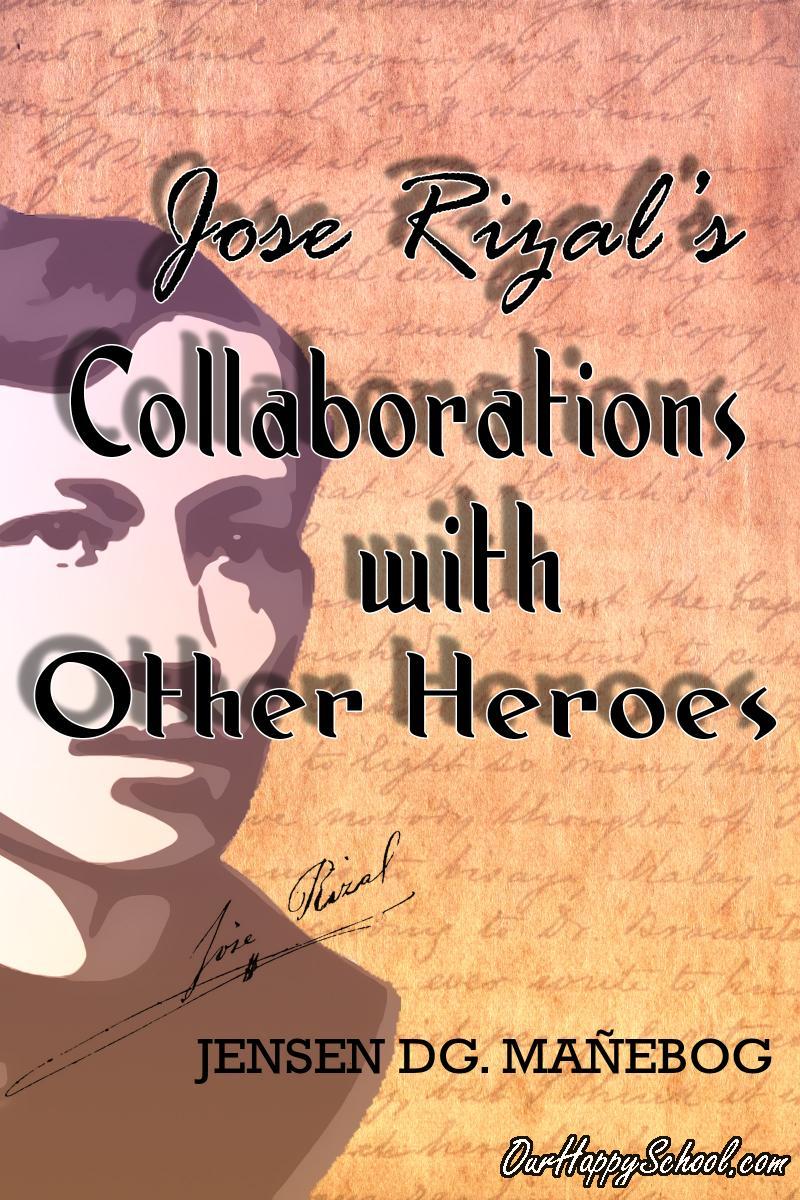

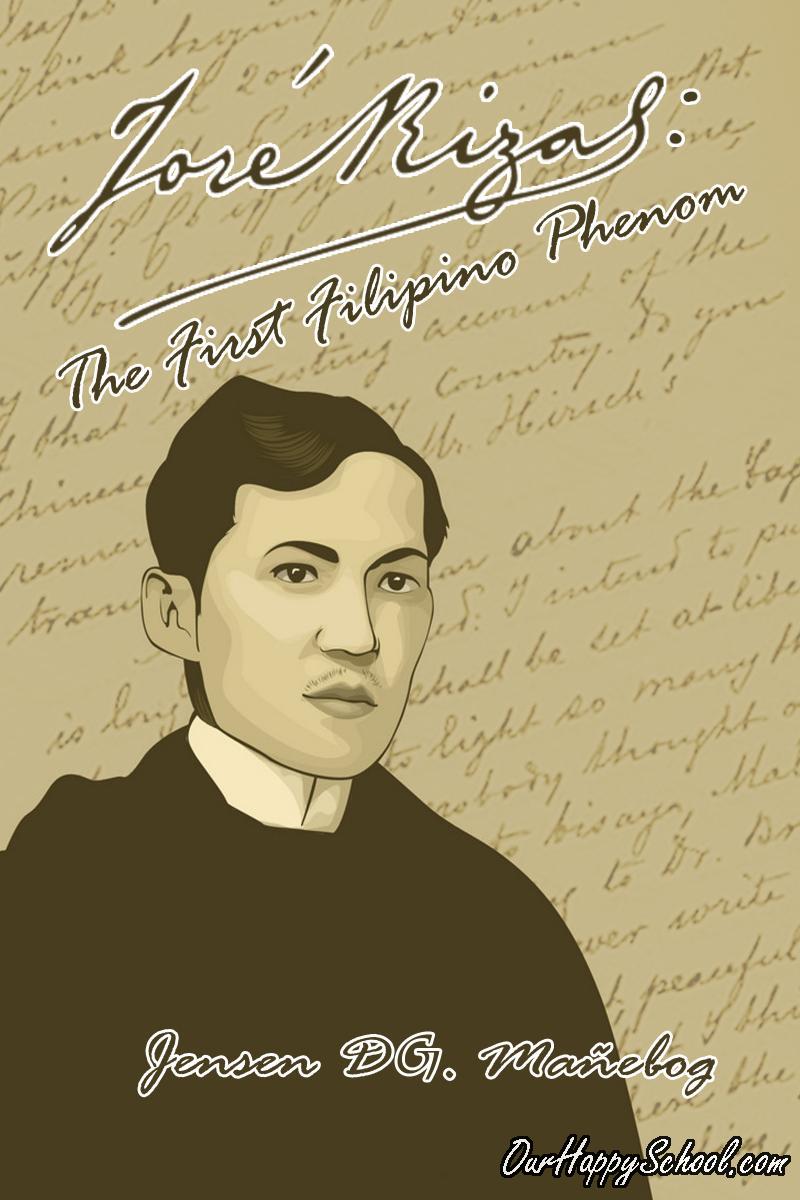

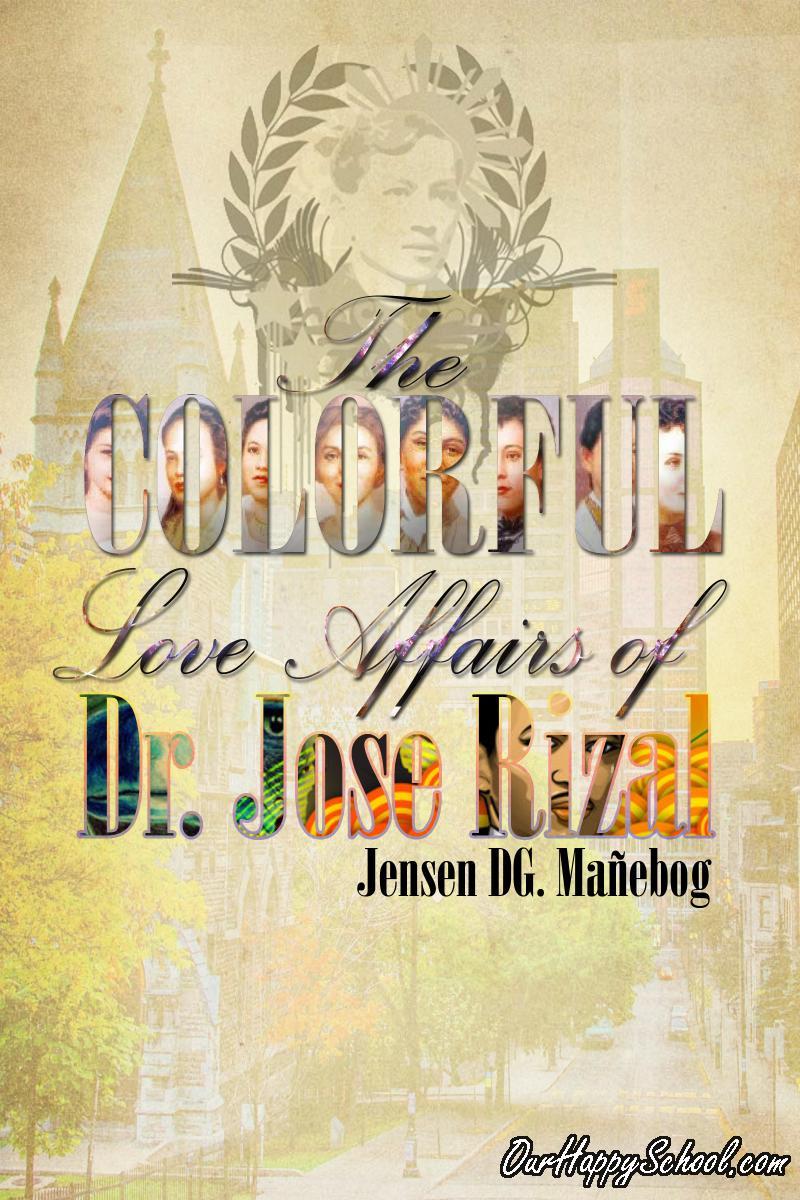


 Jose Rizal’s Poems
Jose Rizal’s Poems In Memory of My Town (Un Recuerdo A Mi Pueblo, 1876)
In Memory of My Town (Un Recuerdo A Mi Pueblo, 1876) To Miss C.O. y R., 1883
To Miss C.O. y R., 1883 My Last Farewell (Mi Ultimo Adios, December 1896)
My Last Farewell (Mi Ultimo Adios, December 1896)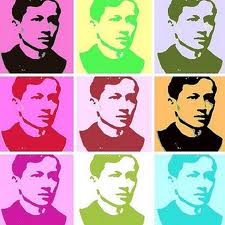
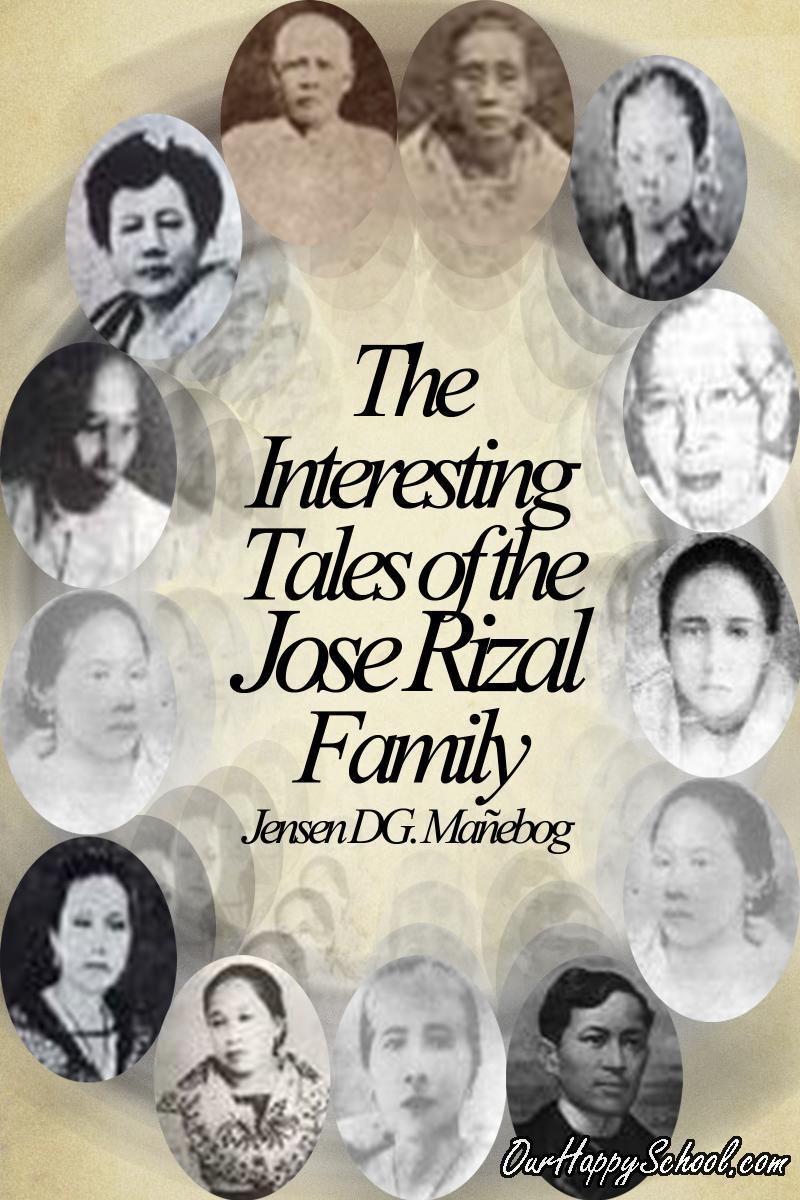
 NOTICE: The lectures/articles enumerated here are protected by copyright laws. Viewers (professors and students) may use them for educational but not for commercial purposes.
NOTICE: The lectures/articles enumerated here are protected by copyright laws. Viewers (professors and students) may use them for educational but not for commercial purposes. Lessons about history are both interesting and fascinating. Learning is much easier when able to understand the events and reasons beyond a situation or a concept in the past. History is interesting for it uncovers things that are unknown to most of the people and the forgotten memories of the past. It gives humanity lessons that has been tested and hardened by time. History is fascinating because of some events might just give astonishment to many who never thought of things happened in the past which actually did. People’s knowledge of our history is minimal, that is why for those who acknowledges this reality should at least contribute for benefitting the many.
Lessons about history are both interesting and fascinating. Learning is much easier when able to understand the events and reasons beyond a situation or a concept in the past. History is interesting for it uncovers things that are unknown to most of the people and the forgotten memories of the past. It gives humanity lessons that has been tested and hardened by time. History is fascinating because of some events might just give astonishment to many who never thought of things happened in the past which actually did. People’s knowledge of our history is minimal, that is why for those who acknowledges this reality should at least contribute for benefitting the many.





